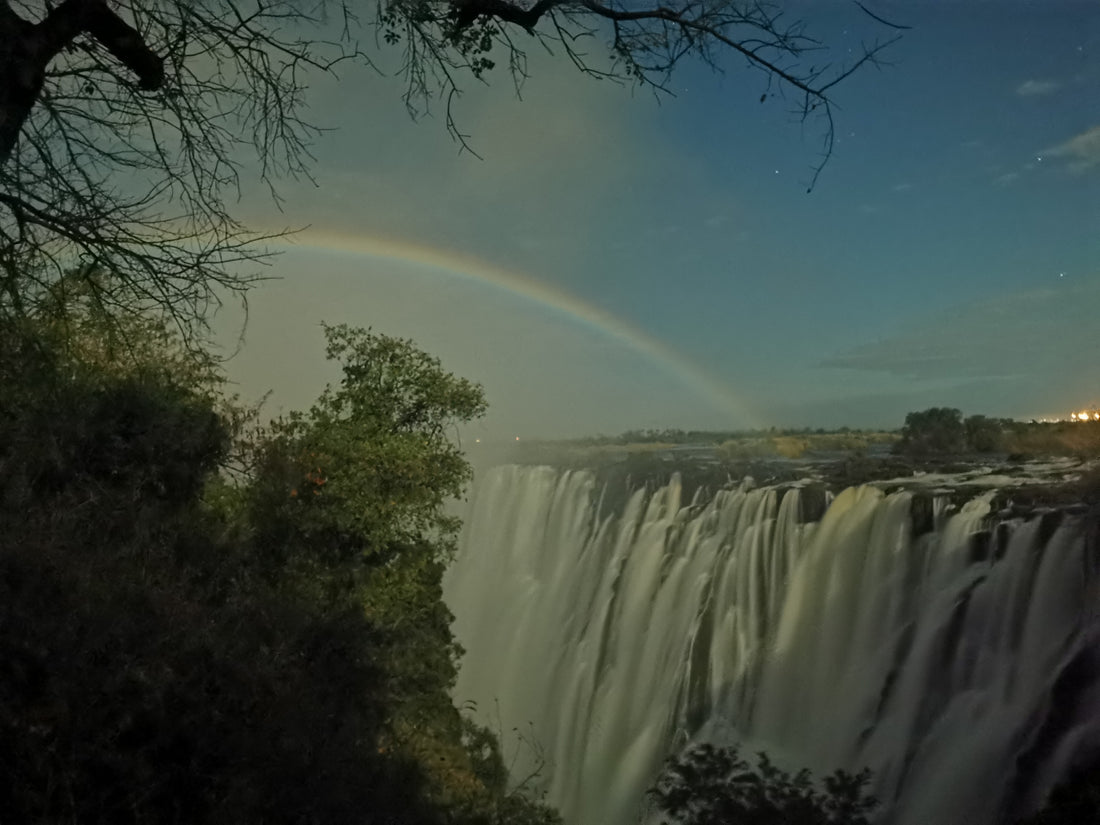
The lunar rainbow in Zambia
Share
The lunar rainbow, also known as a white rainbow, is a rare atmospheric phenomenon that occurs when moonlight is reflected and refracted by water droplets in the air. This event, which occurs only on full moon nights, is only visible on the opposite side of the moonlight.
The main difference between a lunar rainbow and a normal one is the light source, with the former being the moon and the latter being the sun. Also, as we mentioned before, the lunar rainbow is much more difficult to witness than the normal one because the intensity of the moonlight is much less than that of the sun.
The latter is what makes it appear white to the human eye, although if you really look closely you can see the different shades, especially if you have a camera to appreciate it.
To get an idea of how difficult it is to witness one, we will expose the circumstances that have to occur at the same time to be able to see it:
- full moon
- Clear sky
- High humidity
- very bright moonlight
- night / dawn
- Moon at its lowest point (no more than 42 degrees from the horizon)
To be lucky enough to observe this event we must be located either in a place with a large waterfall or in places with high humidity, such as Victoria Falls in Zambia and Zimbabwe, Skogafoss in Iceland, Cumberland Falls in Kentucky (USA) and those of Yosemite in California (USA), as well as in Waimea in Hawaii (USA).
The best point to see them in the Victoria Falls is in the part of Zambia, from the eastern waterfall, especially between the months of June and August.